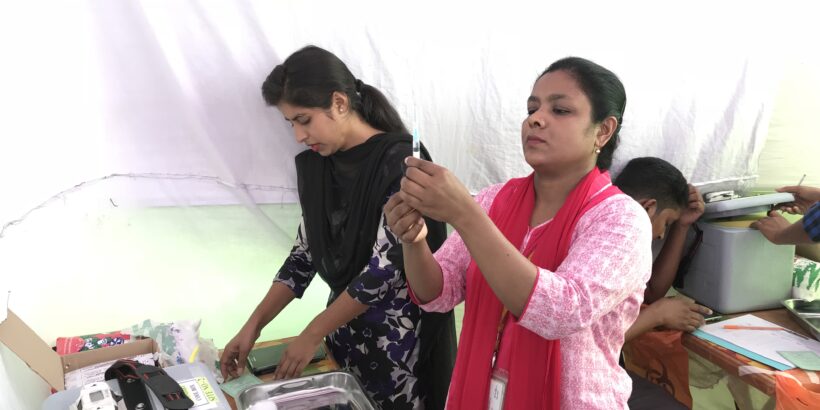Bangladesh has one of the highest incidences of typhoid fever per capita. It is estimated that there are more than three hundred cases of typhoid per one hundred thousand people in the country, and nearly sixty percent of these cases affect children younger than 15 years of age. The World Health Organization recommends typhoid conjugate vaccines (TCVs) in typhoid-endemic countries and those with high rates of drug resistant typhoid. Although the government of Bangladesh has made the decision to introduce TCV into the routine immunization program, it is still important to understand the most cost-effective strategy to reach local communities with the vaccine. Researchers conducted a cost-effectiveness modeling study to understand the most strategic TCV introduction approach in Bangladesh.
Burden data considerations
Due to the difficulties with typhoid diagnosis and surveillance, establishing the cost-effectiveness of TCV in Bangladesh is challenging. To address this issue, researchers calibrated, or fitted, a model to consider typhoid clinical incidence and cost data, as well as data collected from serosurveys. Collecting serosurvey data involves testing the blood of a selected population during a specific period to detect typhoid antibodies, which can indicate active or past infection. By using diverse data sources, the model effectively estimated the incidence of typhoid in the country.
Different approaches remain cost-effective
The model considered several TCV introduction strategies for the next 10 years and found them to be cost-effective. These strategies included: (a) nationwide introduction at 9 to 12 months of age; (b) nationwide introduction through a community-based single catch-up campaign for children aged 1 to 15 years; (c) nationwide introduction of a school-based single catch-up campaign for children aged 5 to 15 years, with vaccination upon entry to school for children who have not been vaccinated. This campaign also includes children who missed both the nationwide and school-based vaccinations.
According to the model‘s projections, if TCV is not introduced in Bangladesh, the country is likely to experience more than 4.7 million typhoid cases in the next 10 years. This cost of inaction could result in more than 14,000 deaths and a societal loss exceeding US$500 million. More than half of this loss could be attributed to caregivers’ lost wages during periods when they are unable to work while caring for typhoid patients.
Outputs from the study project that all the modeled TCV introduction strategies could significantly reduce typhoid incidence. However, the most cost-effective strategy is a nationwide introduction of TCV between 9 to 12 months of age, along with a single catch-up campaign for children aged 1 to 15 years. Compared to no vaccination, this strategy is projected to prevent nearly 4 million cases, more than 11,000 deaths, and save more than US$172 million within 10 years of implementation. The study findings indicate that a community-based catch-up campaign is more cost-effective than a school-based catch-up campaign due to potentially lower costs.
Moving forward
Diagnosis and appropriate treatment for typhoid can be costly. A previous study aimed to determine the cost of illness from typhoid in Bangladesh. The findings revealed that various expenses, including health facility registration fees; clinical examinations; hospital expenses; laboratory tests, drugs, medications, as well as transportation, food, lodging, for care-taking family members, collectively account for approximately 3% of an individual’s average annual income. For individuals who require inpatient care, this percentage increases to about 14%.
Nevertheless, the good news is that the government of Bangladesh has considered the potential costs of both finances and lives and has made the decision to introduce TCV into the routine immunization program. This comes at a strategic time when climate change increases typhoid risk and drug resistant typhoid cases increase in the South Asia region with rising costs to treat typhoid with more expensive and difficult to access antibiotics. As the government moves forward with planning for TCV introduction, it is reassuring to know that nationwide introduction, reaching children between 9 months and 15 years old is a cost-saving, strategic intervention.
Cover photo: A health worker prepares a typhoid vaccine during the TCV efficacy study in Bangladesh. Credit: icddr,b.



